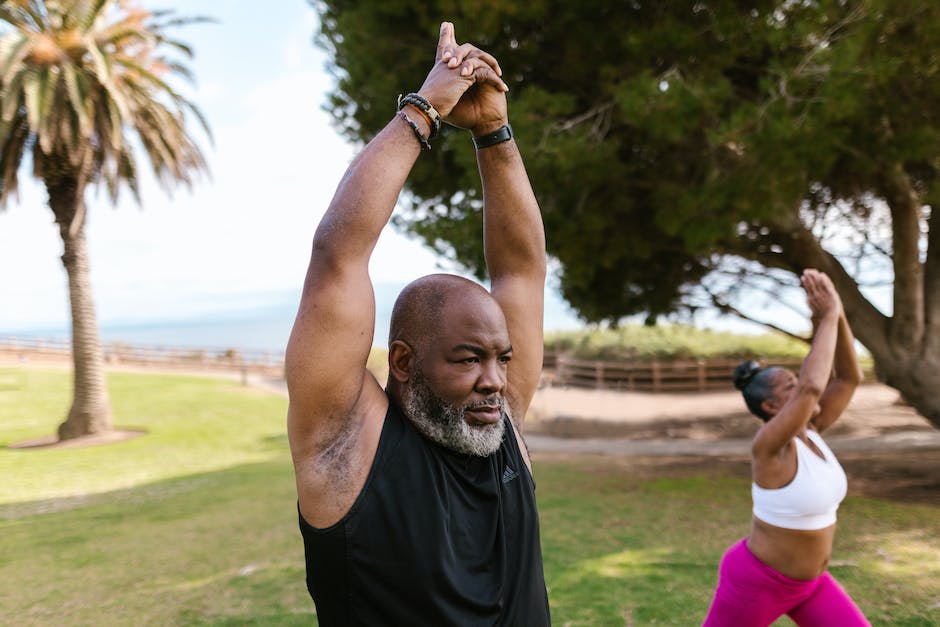Yoga has long been known as a practice that promotes physical, mental, and emotional well-being. It cultivates mindfulness, strength, and flexibility, allowing individuals to better connect with themselves and their environment. Over the years, yoga enthusiasts have been exploring ways to enhance their practice, seeking alternative methods to deepen their experience on the mat.
One such method that has gained increasing popularity in recent years is the combination of cannabis and yoga. Cannabis, specifically the compounds THC (tetrahydrocannabinol) and CBD (cannabidiol), has been found to have various potential therapeutic benefits, including pain relief, stress reduction, and relaxation. As a result, many individuals have started incorporating marijuana into their yoga practice, believing it can help them reach a greater state of presence and tranquility.
However, it is important to approach the combination of cannabis and yoga with caution and respect for the practice. Yoga, traditionally, is a discipline focused on self-awareness and clarity of mind. It requires concentration, control, and connection with the breath. Adding cannabis into the mix can significantly alter one’s state of mind and potentially hinder the ability to achieve these fundamental aspects of yoga.
For those considering incorporating cannabis into their yoga practice, it is crucial to approach it mindfully and responsibly. Understanding the potential effects of THC and CBD is essential, along with the individual’s tolerance levels and personal goals for the practice. It is advisable to start with low doses of marijuana or CBD products and gradually test their impact on the body and mind.
Moreover, it is important to note that not every yoga session may be suitable for combining with cannabis. Some practices, such as vigorous flows or advanced poses, require heightened focus and physical strength, which may be compromised under the influence of cannabis. It is recommended to choose gentle, meditative styles of yoga that align with the principles of relaxation and introspection that cannabis can enhance.
Ultimately, the combination of cannabis and yoga is a personal choice that should be explored with awareness and respect for the practice. It is essential to prioritize safety, create a comfortable environment, and listen to one’s body and mind throughout the experience. By doing so, individuals can potentially find a deeper connection to their practice, allowing them to tap into new levels of relaxation, awareness, and self-discovery.
a) Discuss the growing popularity of combining cannabis and yoga
The growing popularity of combining cannabis and yoga:
In recent years, there has been a significant rise in the popularity of combining cannabis and yoga to enhance the yoga practice. Although yoga and cannabis have both been practiced for centuries independently, the combination of the two has gained momentum, especially in regions where cannabis has been legalized for medicinal or recreational use.
This emerging trend has caught the attention of yogis who seek to deepen their practice and explore new dimensions of relaxation and mindfulness. Yoga, known for its ability to promote inner peace, mental clarity, and physical well-being, aligns perfectly with the effects of cannabis, particularly THC (tetrahydrocannabinol) and CBD (cannabidiol).
Advocates of this combination argue that cannabis can help create a heightened sensory experience during yoga practice. The use of THC-infused products, such as edibles or vaporizers, can induce a sense of relaxation and euphoria, allowing practitioners to develop a deeper connection with their body, breath, and inner thoughts. CBD, on the other hand, is renowned for its calming and anti-inflammatory properties, which can help alleviate stress, enhance focus, and reduce physical discomfort during yoga sessions.
Additionally, practitioners believe that cannabis can aid in overcoming mental and emotional obstacles that may hinder progress in yoga. It can help cultivate a meditative state, increase present-moment awareness, and facilitate a deeper introspection, leading to a more profound spiritual connection. By combining the therapeutic properties of cannabis with the already transformative effects of yoga, individuals may unlock new layers of self-discovery and personal growth.
However, it is important to note that the combination of cannabis and yoga is a personal choice, and the effects can vary from person to person. It is crucial to approach this practice with caution and awareness, ensuring that the use of cannabis aligns with individual intentions and preferences. Furthermore, it is essential to consult with a medical professional or experienced yoga teacher before incorporating cannabis into your yoga practice, especially if you have any underlying health conditions or concerns.
As the popularity of combining cannabis and yoga continues to grow, it is important for practitioners to approach this combination with a responsible and mindful mindset. Understanding the potential benefits and risks, setting clear intentions, and practicing moderation are key elements in creating a safe and authentic experience that deepens the practice of both cannabis and yoga.
In the next section, we will delve into the various ways cannabis can be integrated into a yoga practice, exploring different consumption methods and offering guidance on finding the right balance between mindfulness and therapeutic use.
b) Highlight the benefits and challenges of incorporating THC and CBD into yoga practice

Incorporating THC and CBD into yoga practice has gained significant attention in recent years, with many individuals claiming it enhances their overall experience. Let’s take a closer look at the benefits and challenges that arise when integrating cannabis into your yoga routine.
Benefits:
1. Enhanced relaxation: THC, the psychoactive compound in cannabis, can promote a deep sense of calm and relaxation. When combined with the meditative aspects of yoga, it can help practitioners reach a heightened state of tranquility and serenity.
2. Increased mindfulness: Both THC and CBD have been known to help improve focus and bring a heightened sense of awareness. This can foster a deeper connection between the mind and body during yoga practice, allowing participants to be more present in each pose and movement.
3. Pain relief and muscle relaxation: CBD, a non-psychoactive compound found in cannabis, has been widely recognized for its potential in reducing pain and inflammation. Combining CBD with yoga can help alleviate physical discomfort, making it easier to engage in various poses and stretches, ultimately enhancing flexibility and performance.
Challenges:
1. Dosage control: Finding the right dosage of THC or CBD to integrate into your yoga practice can be challenging. Each individual’s tolerance and response to cannabis may vary, and it is crucial to start with smaller doses and gradually increase as needed. Overconsumption may lead to feeling overly lethargic or unfocused, hindering the intended benefits of yoga.
2. Legal restrictions: It is essential to consider the legal implications of using cannabis. While some states or countries have legalized recreational or medical marijuana, others have strict regulations. Ensure that you are well-informed about the laws governing cannabis use in your area before incorporating it into your yoga routine.
3. Personal preference and sensitivity: Cannabis affects individuals differently, and what works for one person may not work for another. Some people may find that cannabis enhances their yoga practice, while others may feel it hinders their ability to focus or connect with their bodies. It is crucial to listen to your body and gauge how cannabis affects you personally.
Ultimately, deciding to incorporate THC and CBD into your yoga practice is a personal choice. It is advised to consult with a healthcare professional or yoga instructor who is knowledgeable about cannabis’s effects and can provide guidance tailored to your specific needs. Remember, the goal of yoga is to promote overall well-being, and it’s essential to respect your body’s limits and boundaries while exploring any new practice or substance.
Understanding the endocannabinoid system

As the acceptance and legalization of cannabis grow, more individuals are exploring the combination of cannabis and yoga to enhance their practice. To truly appreciate the impact of cannabis on yoga, it is important to first understand the endocannabinoid system and how it interacts with THC and CBD.
The endocannabinoid system (ECS) is a complex network of receptors, enzymes, and endocannabinoids located throughout the human body. Its primary function is to maintain homeostasis, or balance, within various bodily systems. The ECS plays a crucial role in regulating functions such as sleep, mood, appetite, pain, and immune response.
There are two main types of cannabinoid receptors in the ECS: CB1 and CB2 receptors. CB1 receptors are primarily found in the brain and central nervous system, while CB2 receptors are predominantly found in the peripheral nervous system and immune cells. THC, the psychoactive compound in cannabis, primarily binds to CB1 receptors, resulting in the classic cannabis “high” and associated effects on cognition, mood, and perception.
CBD, on the other hand, interacts with the ECS in a different way. Unlike THC, CBD does not directly bind to CB1 or CB2 receptors. Instead, it modulates the function of these receptors and other signaling pathways within the ECS. CBD has been found to have various therapeutic properties, such as reducing anxiety, inflammation, and pain. It can also counteract some of the negative side effects associated with THC consumption, such as paranoia and anxiety.
When cannabis is incorporated into a yoga practice, it can potentially enhance the mind-body connection and promote a deeper sense of relaxation, focus, and introspection. THC’s ability to alter perception and induce a sense of relaxation may help individuals enter a meditative state more easily. CBD’s anti-inflammatory and analgesic properties might also alleviate any discomfort or tension in the body, allowing practitioners to move more freely and mindfully.
It is important to note that the combination of cannabis and yoga is a highly individual experience. Each person’s sensitivity and reaction to cannabinoids can vary greatly. Some individuals may find that cannabis enhances their practice, while others may find it detracts from their focus and concentration. Additionally, laws around cannabis consumption can differ from one jurisdiction to another, so it’s crucial to understand and comply with local regulations.
Before incorporating cannabis into your yoga practice, it is advisable to consult with a healthcare professional, particularly if you have any pre-existing medical conditions or are on medications. Engaging in open and honest communication with your yoga teacher and fellow practitioners is also important, as it can foster a supportive and informed environment.
In conclusion, understanding the endocannabinoid system is essential when considering the combination of cannabis and yoga. The unique interactions between THC, CBD, and the ECS hold potential for enhancing the mind-body connection and deepening one’s yoga practice. However, it is crucial to approach this combination with awareness, respect for individual differences, and compliance with relevant legal and medical considerations.
a) Explain the role of the endocannabinoid system in the body

The human body is an intricate and fascinating system, with various complex networks working in harmony to maintain optimal health. One such regulatory system that has gained significant attention in recent years is the endocannabinoid system (ECS). The ECS plays a crucial role in maintaining balance and homeostasis throughout the body.
Comprising of endocannabinoids, receptors, and enzymes, the ECS is responsible for managing a wide array of physiological functions, including mood, appetite, sleep, pain perception, and immune response. The two primary types of receptors within the ECS are known as CB1 and CB2 receptors.
CB1 receptors, which are predominantly found in the central nervous system, influence various cognitive processes, pain regulation, and coordination. On the other hand, CB2 receptors are mainly present in the peripheral tissues, particularly within the immune cells, and play a significant role in modulating inflammation and immune responses.
What makes the ECS particularly intriguing is its interaction with cannabinoids, such as THC (tetrahydrocannabinol) and CBD (cannabidiol), which are naturally found in the cannabis plant. THC is known for its psychoactive properties and is responsible for the “high” associated with marijuana use. CBD, on the other hand, does not produce psychoactive effects but possesses a wide range of potential therapeutic benefits.
When consumed, these cannabinoids interact with the ECS, binding to receptors and influencing the release of neurotransmitters. This interaction can help regulate various bodily functions and potentially provide relief for conditions like chronic pain, anxiety, and sleep disorders.
In recent years, the combination of cannabis and yoga has gained popularity as individuals seek to enhance their practice by tapping into the potential synergistic effects of THC and CBD on the mind and body. Some practitioners believe that consuming cannabis before or during yoga can deepen their mind-body connection, promote relaxation, induce a meditative state, and enhance the overall experience.
However, it’s important to note that the effects of cannabis can vary greatly from person to person, and its consumption should be approached mindfully and responsibly. Additionally, it is crucial to consult with a medical professional or certified cannabis specialist before incorporating cannabinoids into your yoga practice, especially if you have underlying health conditions or are taking medications.
While the potential benefits of cannabis and yoga continue to be studied, it is essential to approach the combination with an open mind and explore what works best for you as an individual. As with any wellness practice, it is important to prioritize self-care, self-awareness, and respect for your body’s limits.
As the understanding of the endocannabinoid system expands and further research is conducted, we can expect to gain more insights into how THC, CBD, and yoga can intersect to create a mindful and transformative experience.
b) Discuss how cannabis interacts with this system to produce various effects

The endocannabinoid system, a complex network of receptors and neurotransmitters, plays a crucial role in maintaining balance and homeostasis throughout the body. This system is responsible for regulating a wide range of physiological processes such as pain perception, mood, appetite, and immune response.
When cannabis is consumed, its active compounds, THC (tetrahydrocannabinol) and CBD (cannabidiol), interact with the endocannabinoid system in different ways, which can result in various effects on the body and mind. THC primarily binds to the CB1 receptors in the brain and central nervous system, leading to the psychoactive effects commonly associated with cannabis use.
The activation of CB1 receptors by THC can result in a sense of euphoria, relaxation, and altered perception of time. This can be particularly beneficial for individuals looking to deepen their yoga practice, as it can help to promote a state of relaxation, reduce anxiety, and enhance the mind-body connection.
On the other hand, CBD interacts with both CB1 and CB2 receptors, but it does not produce significant psychoactive effects. Instead, CBD is known for its potential therapeutic properties, including anti-inflammatory, analgesic, and anxiolytic effects. Incorporating CBD into your yoga practice may help to alleviate pain, reduce inflammation, and promote a sense of calm and balance.
It is important to note that the effects of cannabis can vary significantly depending on the strain, dosage, method of consumption, and individual tolerance. Therefore, it is essential to approach the use of cannabis mindfully and responsibly. It is always advisable to consult with a healthcare professional before incorporating cannabis into your yoga practice, especially if you have any underlying medical conditions or are taking medications.
In conclusion, cannabis, particularly THC and CBD, can interact with the endocannabinoid system to produce various effects that can deepen your yoga practice. THC can promote relaxation and enhance the mind-body connection, while CBD may help alleviate pain and promote overall balance. However, it is important to approach cannabis use responsibly and seek guidance from healthcare professionals to ensure safety and efficacy.
The potential benefits of combining cannabis and yoga

Yoga is a centuries-old practice that has been embraced by millions worldwide for its numerous physical, mental, and spiritual benefits. In recent years, the use of cannabis as a complementary element during yoga sessions has gained popularity among practitioners and enthusiasts alike. This unique combination has sparked intrigue and curiosity, as people strive to explore new ways to enhance their yoga experience.
One potential benefit of combining cannabis and yoga is the ability to deepen one’s practice. Cannabis, specifically the two most common compounds found in it – THC and CBD, can interact with the body’s endocannabinoid system, which is responsible for regulating various physiological processes. This interaction is believed to promote a state of relaxation, allowing practitioners to enter a deeper state of meditation and mindfulness during their yoga practice.
By incorporating cannabis into their yoga routine, individuals may find it easier to quiet their minds, focus on their breath, and remain present in the moment. The calming effects of THC and CBD can help alleviate distractions, tensions, and stress that often interfere with achieving a state of deep connection with oneself and the practice. As a result, practitioners may experience an enhanced sense of relaxation, tranquility, and overall well-being.
Additionally, the combination of cannabis and yoga can potentially enhance physical sensations and body awareness. Some practitioners have reported heightened sensory perception, increased sensitivity to movements, and a more profound connection to their bodies during their practice. This heightened awareness can allow individuals to better understand their body’s limitations and capabilities, enabling them to make adjustments and modifications that lead to a more effective and mindful yoga practice.
It’s important to note that the potential benefits of combining cannabis and yoga can vary from person to person. Factors such as individual tolerance, dosage, strain, and personal preferences all play a significant role in determining one’s experience. It is crucial to approach this combination with caution, mindfulness, and respect for one’s own limitations and boundaries.
As cannabis laws and perceptions continue to evolve, it becomes increasingly important to have open and honest conversations about its potential benefits and risks. Whether you choose to incorporate cannabis into your yoga practice or not, it is vital to prioritize your overall well-being and make informed decisions based on personal research and professional guidance.
In conclusion, the combination of cannabis and yoga presents an intriguing opportunity for individuals to deepen their practice, promote relaxation, and enhance body awareness. While there is much to explore and understand about this union, it is essential to approach it with mindfulness, respect, and an appreciation for your personal journey and well-being. As always, consult with professionals and trusted sources to make informed decisions that align with your needs and values.
a) Explore how THC and CBD may enhance relaxation and reduce anxiety during yoga practice

Cannabis and Yoga: Deepening Your Practice With THC and CBD
Yoga is a practice that focuses on the mind-body connection, emphasizing relaxation and mindfulness. For many practitioners, achieving a state of deep relaxation and inner calm can sometimes be challenging, especially in today’s fast-paced and stressful world. This is where the potential benefits of THC (Tetrahydrocannabinol) and CBD (Cannabidiol), two compounds found in cannabis, come into play.
THC, the psychoactive component of cannabis, is known for its ability to induce a euphoric high and alter one’s perception. However, when used in moderation and under controlled circumstances, THC can also help individuals relax and unwind. By activating the cannabinoid receptors in the brain, THC has shown potential in reducing anxiety, promoting relaxation, and enhancing mood.
CBD, on the other hand, is a non-psychoactive compound that has gained popularity for its potential therapeutic effects. It has been widely reported to help reduce anxiety and promote overall well-being. By inhibiting the reuptake of certain neurotransmitters in the brain, CBD can provide a calming effect without the high associated with THC.
When combined with the practice of yoga, THC and CBD have the potential to deepen one’s experience and offer additional benefits. Many yoga practitioners have reported that incorporating cannabis into their practice can help them achieve a greater sense of relaxation, enabling them to let go of physical and mental tension more easily. By reducing anxiety, THC and CBD may enable individuals to fully immerse themselves in the present moment, enhancing the mind-body connection that is at the core of yoga.
It’s important to note that the effects and experiences with cannabis can vary from person to person. Just as with any substance, it is crucial to approach the use of THC and CBD responsibly and with awareness. Choosing the appropriate strain and dosage, as well as considering any individual sensitivities or medical conditions, is essential when incorporating cannabis into your yoga practice.
Before incorporating THC or CBD into your yoga practice, it is advisable to seek guidance from a knowledgeable healthcare professional or an experienced cannabis practitioner. They can help you understand the potential benefits and risks associated with cannabis use and provide tailored recommendations based on your personal needs and goals.
Remember, yoga is a personal journey, and each individual’s path to relaxation and mindfulness may look different. While THC and CBD may offer potential benefits in enhancing relaxation and reducing anxiety during yoga practice, it is ultimately up to each practitioner to explore and decide what works best for them.
b) Discuss the potential for pain relief and increased body awareness with cannabis use

With the growing acceptance and legalization of cannabis, more people are exploring the potential benefits it can offer beyond its recreational use. One such area where cannabis is gaining attention is in the realm of yoga and meditation. Combining the ancient practice of yoga with the mindful consumption of cannabis allows enthusiasts to unlock new dimensions of relaxation, pain relief, and increased body awareness.
For many individuals, practicing yoga can be a physically challenging experience. Whether it’s due to chronic pain, muscle tightness, or stiffness, some yogis may find it difficult to fully engage in certain poses or movements. Cannabis, particularly THC and CBD, has been found to have potential pain-relieving properties, making it an attractive option for those seeking a deeper yoga practice.
THC, the psychoactive compound in cannabis, has shown promise in reducing pain sensations. It can help alleviate discomfort by interacting with the body’s endocannabinoid system, which plays a crucial role in regulating pain signals. By incorporating THC into their yoga practice, individuals with chronic pain conditions such as arthritis or fibromyalgia may experience a reduction in discomfort, allowing them to move more freely and fully immerse themselves in their practice.
On the other hand, CBD, a non-psychoactive compound found in cannabis, offers its own set of benefits. CBD is known for its anti-inflammatory properties and ability to promote relaxation and stress reduction. By consuming CBD before a yoga session, individuals can potentially experience a heightened sense of body awareness, enabling them to focus more deeply on their breathing, alignment, and physical sensations. This newfound mindfulness can lead to improved flexibility, balance, and overall performance on the mat.
It’s essential to note that the effects of cannabis use can vary from person to person, and finding the right dosage and strain is crucial for a successful cannabis-infused yoga experience. As with any new endeavor, it’s advisable to start low and slow, gradually introducing cannabis into your yoga routine to facilitate a comfortable and enjoyable practice.
In summary, the combination of cannabis and yoga offers a unique opportunity to deepen your practice by providing potential pain relief and increased body awareness. Whether you choose THC for its pain-alleviating properties or CBD for its calming effects, incorporating cannabis mindfully can amplify the benefits of yoga and take your practice to new heights. As always, it’s important to consult with a medical professional or yoga instructor before embarking on any new wellness regimen to ensure it aligns with your individual needs and goals.

